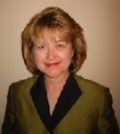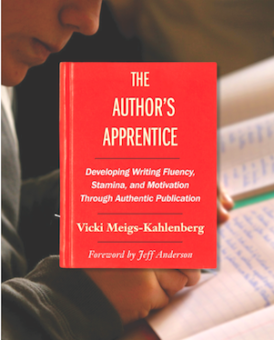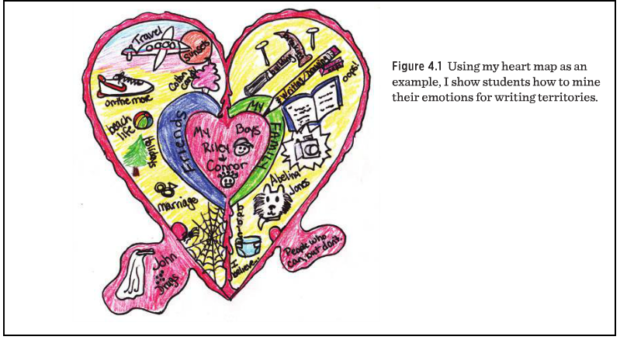From Student Apprentice to Published Writer
The Author’s Apprentice: Developing Writing Fluency, Stamina, and Motivation Through Authentic Publication
By Vicki Meigs-Kahlenberg
(Stenhouse Publishers, 2016 – Learn more)

What I love about this book is the student involvement that the author helps us structure as we teach writing to middle grade and older students.
Vicki Meigs-Kahlenberg is a believer in students working for publication in a variety of forms and genres. Believe it or not, all her seventh graders write a novel in November using the NaNoWriMo (National Novel Writing Month) approach, which she herself calls an “insane challenge.”
However, because students loved doing it the first year, the word got around and other students (and even a few adults) begged to do it in year two.
What you’ll learn in this book

Students spend time “establishing writerly habits” in semester one. They are taught to read with a writer’s eye and eventually to look at the whole world with one.
Students go to the work of favorite authors to identify and collect examples of amazing word choices, craft and vocabulary. They participate in weekly writing challenges at home.
They also write in the classroom every day for a variety of reasons, but one day a week is “Workshop Day” based on “Writer’s Wisdom.” This wisdom is not teacher-imposed, but quotes collected by students from their favorite writers.
Meigs-Kahlenberg then teaches mini-lessons. She also teaches students how to have writer’s conferences in which, when writing is shared, there is one specific reflection of praise and one “push” that will help move the writing forward.
In the second semester, conferring is more individualized with the goal that the teacher will meet each student’s particular needs on the way to publication. There are special RRW (Revisit and Revise Writing) weeks to keep the work moving forward.
The author-teacher has a specific way she wants every student’s notebook to be organized, and she spends an entire class period helping them set these up. Because my own writer’s notebook has what Meigs-Kahlenberg calls “a serious identity crisis,” I am going to try her brilliant methods of organizing. See her inside tips (pp. 28-32) for dividers and tabs and her cover options. (You can browse the whole book at this Stenhouse webpage.)
Cool writerly moves
Part Two of the book asks “What Do Authors Do?” Here Meigs-Kahlenberg aims to teach “cool writerly moves.” In her classes, she lets students discover contemporary young adult authors like Meg Cabot or even picture books, which are shorter for reluctant readers. She models the finding of and then teaches lessons on topics like “luscious language,” “the power of three,” “powerful proper nouns” and more. Her students also look at pop music. She shows students they can “create language that sounds like literature.”
Heart Maps are the first step to becoming published authors. Meigs-Kahlenberg quotes from the popular writing book Awakening the Heart: Exploring Poetry in Elementary and Middle School (Heard, 1999) and uses the technique of “heart mapping” to get students started and writing for themselves first.
Students develop their hearts from nine heart-mapping questions, and the adult reader, too, will have a reflective, enjoyable time answering these questions. The author never asks her students to do something she wouldn’t do, and she models her own map. She distributes blank templates, and students can use pictures, words, and colors and even go outside the heart. Heart maps are glued to the inside of student notebooks and they write from the heart for 20 minutes three times a week.
The NaNoWriMo experience
Part Three goes into the specifics of writing novels for the NaNoWriMo experience. There are glowing reviews from parents and students about the process and products. Meigs-Kahlenberg gives a history of how this month came to be in 1999 and includes websites and resources to set a class up for participation and to make the experience “A November to Remember.”
Lessons include creating characters, eavesdropping and recording life as it happens. I was surprised to see that she had not included a lesson or reference to “The Hero’s Journey.” Still, she has convinced this reader that the project is do-able, even for seventh graders, and that the event will build confidence for all future writing.
After NaNoWriMo, students return to their notebooks and writing for authentic purposes – including researching and asking “what if?” in a variety of writing situations.
From writing to publishing
Part Four is focused on publishing. The author argues that publication is the ultimate performance assessment. Students are expected to submit to actual publications, and Meigs-Kahlenberg has researched places to send student work. She especially likes Creative Communications because they are “kid-friendly.” Teachers, she argues, also need to submit to journals. They need to know what rejection feels like, because all writers are rejected at times.
In Chapter Eight, “Revising,” television sitcoms are compared to short stories and there is a terrific worksheet to analyze a sitcom. In discussing peer editing she cautions that parents are not the ideal editors because they want to concentrate on conventions and not idea development and flow. I, too, have found this to be true, so following this advice can avoid a lot of frustration for all parties.
When students actually submit or mail their manuscript, after learning how to write a Letter to the Editor and even address an envelope, there is a “ceremonial walk of pride” where the teacher rings a bell and the student walks to the office to mail their work with peers cheering. Imagine the sense of accomplishment felt by both teachers and students.
Challenging, inspiring and practical
The Author’s Apprentice model is challenging, yet inspiring and practical because of the way this author has structured an entire year of writing instruction. The quotes on craft from experienced, published writers are worth the price of the book, yet there is so much more here. The appendix is full of questions, checklists, planning sheets, and samples that will be useful even if students don’t participate in NaNoWriMo.
Miegs-Kahlenberg has helped hundreds of students become published writers. Every writing teacher needs this book, whether to expand their thinking of what writing can be – even for younger students – or to put her strategies and ideas into action now.
Dr. Mary Langer Thompson’s articles, short stories, and poetry appear in various journals and anthologies. She is a retired school principal who now writes and teaches writing workshops in schools, in prisons, and in her community.































